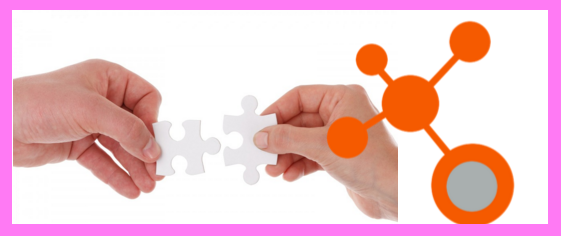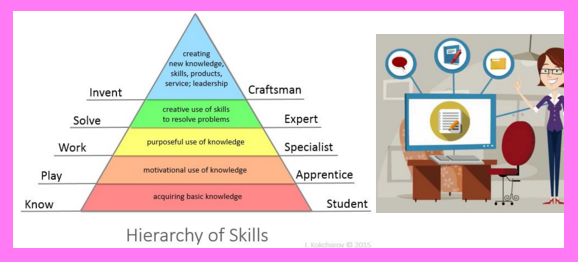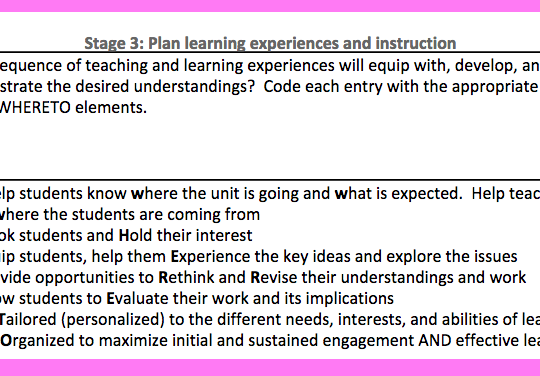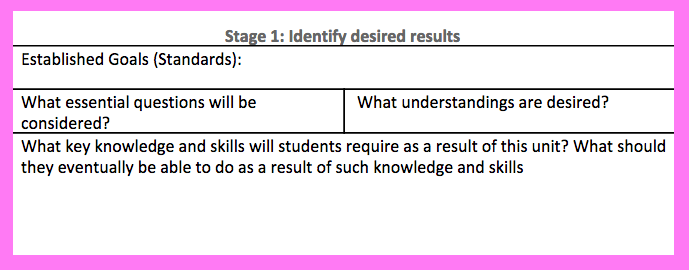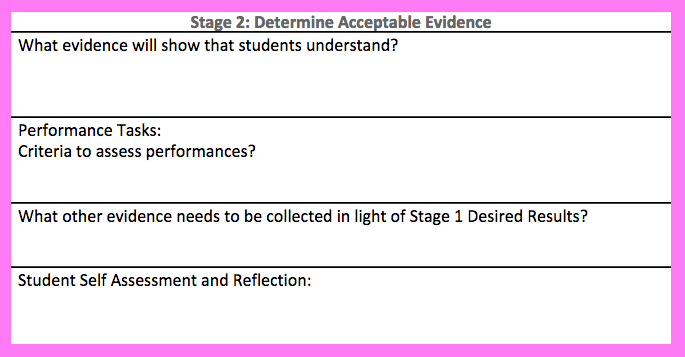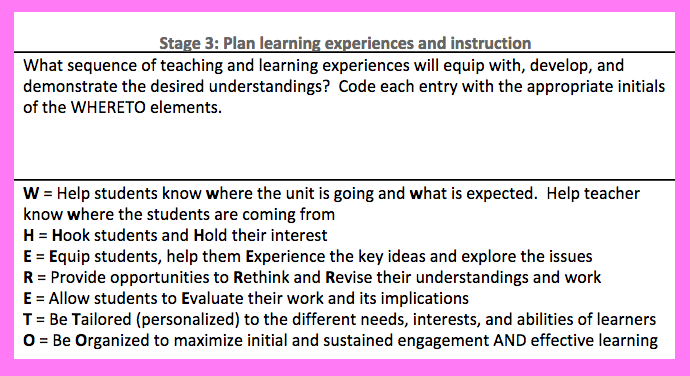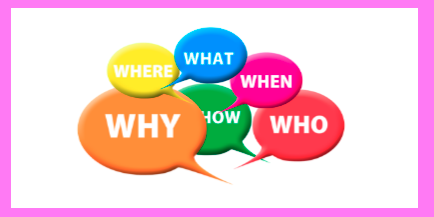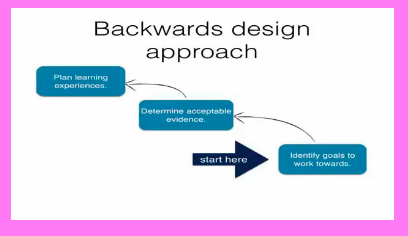Stage 1 Template
Stage 1 Evaluation standards
To what extend does the design focus on the big ideas of targeted content?
- Are the targeted understandings
-
enduring, based on transferable, big ideas at the heart of the discipline and in need of uncoverage?
-
framed by questions that spark meaningful connections, provoke genuine inquiry and deep thought, and encourage transfer?
-
Are the essential questions provocative, arguable, and likely to generate inquiry around the central ideas (rather than just a pat answer)?
-
Are appropriate goals (i.e. SWLO, content standards) identified?
- Are valid and unit-relevant knowledge and skills identified?
Stage 2 Evaluation Standards
To what extent do the assessments provide fair, valid, reliable and sufficient measures of the desired results?
-
Are students asked to exhibit their understanding through authentic performance tasks?
-
Are appropriate criterion-based scoring tools used to evaluate student products and performances?
-
Are various appropriate assessment formats used to provide additional evidence of learning?
-
Are the assessments used as feedback for students and teachers, as well as evaluation?
- Are students encouraged to self assess?
Stage 3 Template
Stage 3 Evaluation Standards
To what extent is the learning plan effective and engaging?
-
Will the students know where they’re going (learning goals), why the material is important, what is required of them (unit goals, performance requirements,etc ..)
-
Will the students be hooked – engaged in digging into the big ideas (through research, inquiry, experimentation, problem solving ..)
-
Will the students have adequate opportunities to explore and experience big ideas and receive instruction to equip them for the required performance?
-
Will the students have sufficient opportunities to rethink, rehearse, revise, and refine their work based upon timely feedback?
-
Will the students have an opportunity to evaluate their work, reflect on their learning, and set goals?
-
Is the learning plan tailored and flexible to address the interests and learning styles of all students?
- Is the learning plan organized and sequenced to maximize engagement and effectiveness?
Holistic Criteria
To what extent is the entire unit coherent, with all the elements of all 3 stages aligned?
The Backwards Design Template and Standards summarizes all the components and criteria in the backwards design process. This process aims to design and implement units (projects) that avoid 2 pitfalls common in traditional units: 1) hands-on without being minds-on and 2) coverage instead of uncoverage.
Phase 1 aims to guide teachers to develop a clear, prioritized picture of a unit’s learning goals. Phase 2 aims to guide teachers to think deeply about what portfolio of assessments will count as a valid system for seeing evidence of student mastery of learning goals. Phase 3 focuses on developing scaffolding that aligns to learning goals and assessments.
NOTE: Although these phases are numbered, they do not always need to be completed in number order. They key thing is that all phases are completed and well considered prior to project launch. To see multiple orders for completing this template, based on different ideation processes, see
this article.
Preparation Steps
- Recruit teacher sounding boards who will trial this template and standards with you
- Use this template and standards to plan projects
- Use backwards design standards to reflect upon and to refine project template form
- Run critical friends with other teachers that is influenced by the backwards design standards. Refine template form as needed.
- Gather and create resources that are outlined in completed template.
Early Implementation Processes
- Implement project plan outlined in project template.
- Gather notes on how well each phase is working during the project.
- Use reflection prompts and facilitated discussions to gather more student data as to whether or not the plan is helping student stay engaged and dig deeper into their learning.
Advanced Implementation Processes
- Use student data to plan better for remediations and to better align hooks to student interests
- Create a simplified version, student friendly version of standards. Show student panel your template and have them evaluate the project outline in the form using the standards. If you don’t want to reveal the hook early, you can ask former students to serve on your evaluation panel.
- Use simplified (or not) version of template and standards to guide students to design their own projects and independent inquiries.
- Integrate some components from Human Centered Design into template and standards


